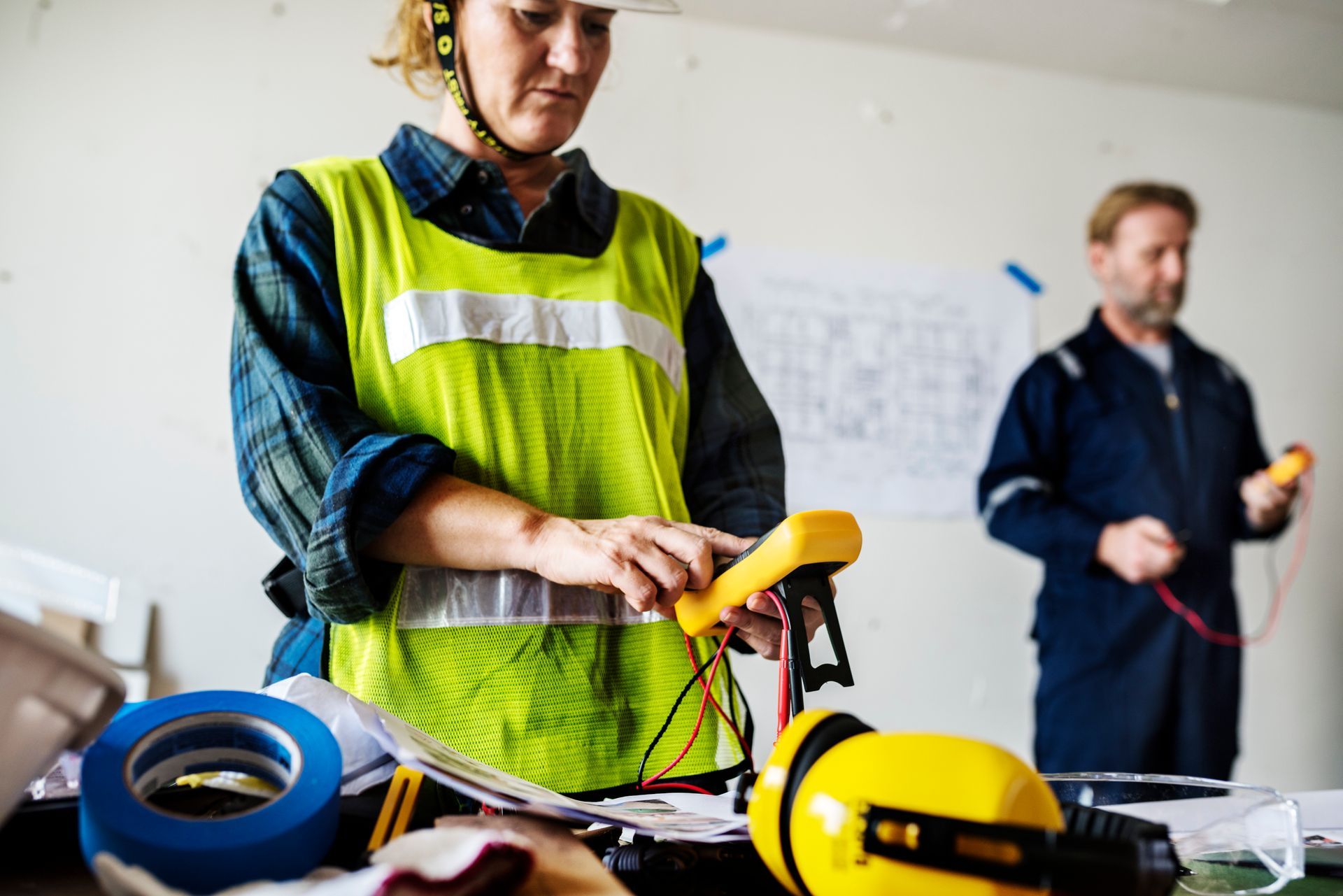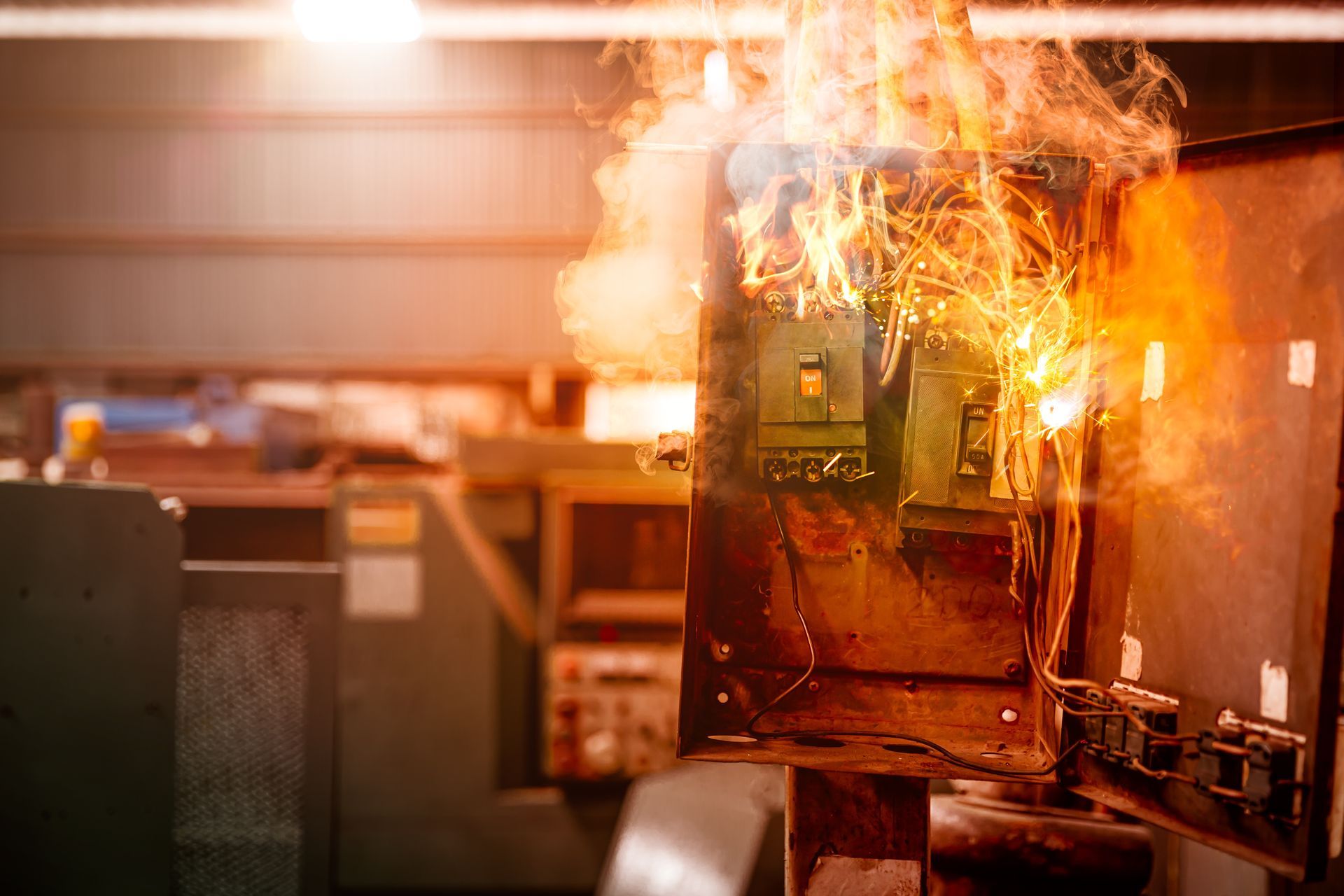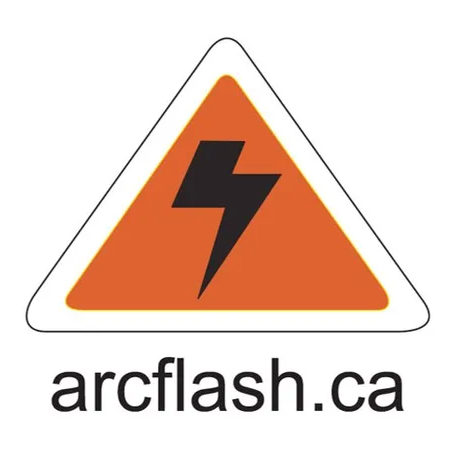Arcflash.ca Shares Electrical Safety Advice, Videos, New Courses And More!
Electrical Safety is SO important. Please use this information to refresh yourself on some safety essentials - if you have any questions, be sure to call or e-mail me at len@arcflash.ca!
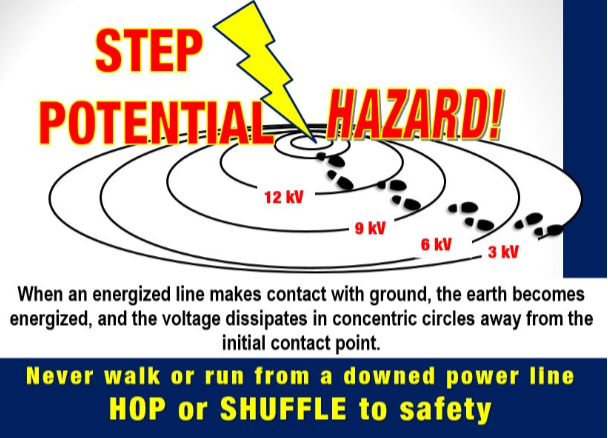
Let Us Not Forget About Ground Gradient and Step Potential Fallen or Low Hanging Wires
In the unfortunate event that one has been involved in a motor vehicle collision where there are fallen wires on or near the vehicle, “Stay in the vehicle”… until the electrical utility personnel have arrived. A vehicles tires may smoke or explode from heating up, however remain in the vehicle, except in the case of fire. In the event of the worst case situation, the vehicle is on fire which cannot be readily extinguished. The driver is now in extreme danger. Contacting metal parts of the vehicle and ground at the same time could be fatal. By keeping both feet together and jump clear of the vehicle. Avoid touching the car as both feet come in contact with the ground. Take short shuffle steps keeping both feet as close together as possible. They must avoid contacting each other. Move in this manner away from the vehicle for at least 10 metres (33 ft).
Jumping clear of a vehicle can be very dangerous and should only be attempted in circumstances where there is no other alternative such as a vehicle fire. The condition of the vehicle and physical ability of the occupant must also be
considered. In the event that one witnesses a motor vehicle collision involving fallen wires, before getting out of your vehicle, examine the surroundings carefully and ensure that you are parked well away from the fallen wires. If it is night time, use a flashlight to examine the surroundings carefully from your vehicle window. Keep your distance including your vehicle a distance of at least 10 metres (33 ft) or more is recommended from the down wire or conductive object it is in contact with.
If an energized wire touches a car, truck, metal fence or any other conductive object that object will now become energized and could cause serious or fatal injury. Establish the “Safe Zone” at least 10 metres (33ft) away from wires and
anything the wires may be touching. Secure the area and prevent people from entering into areas where there are fallen or broken wires, or electrically charged objects. Do not attempt to move any fallen wires, call and wait for electrical utility personnel.
To learn more, check out the video below, as well as the amazing pictures courtesy of the London
Ont. Fire Department
!
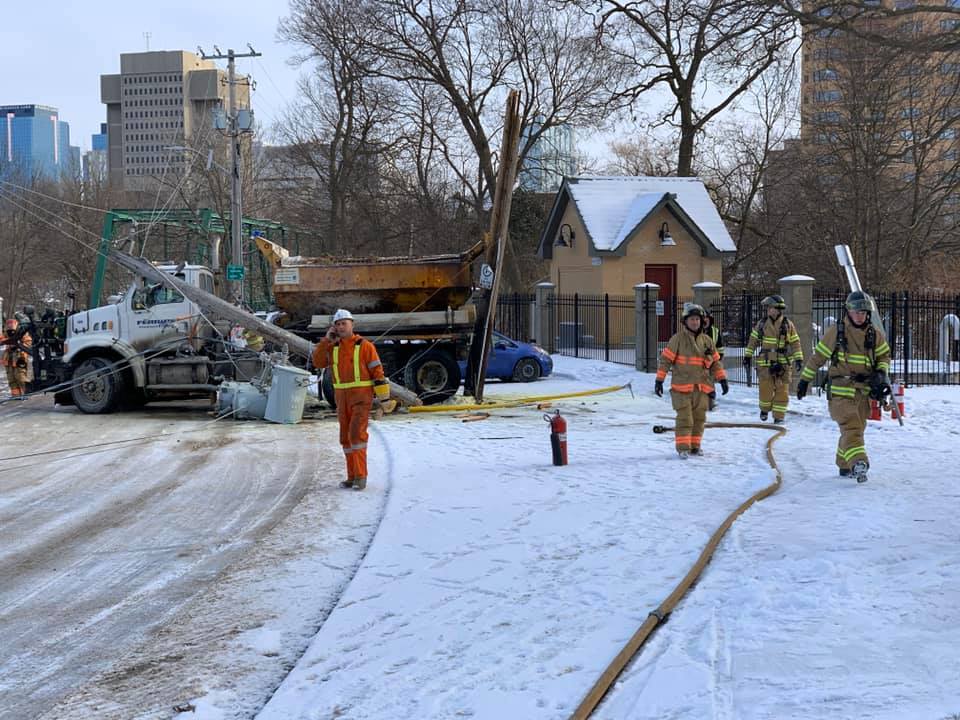
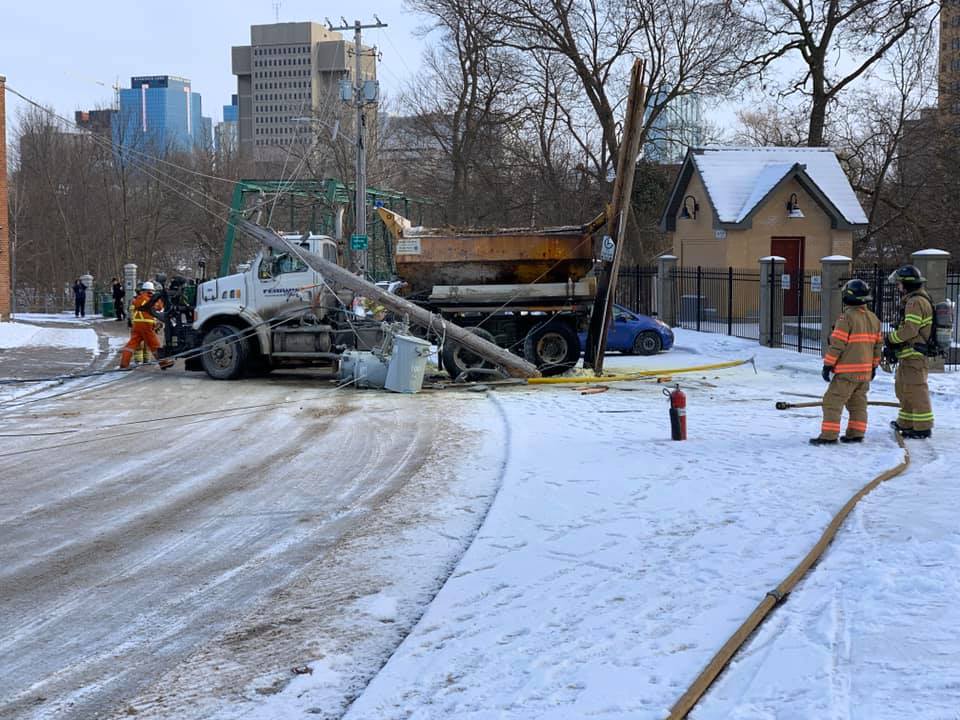
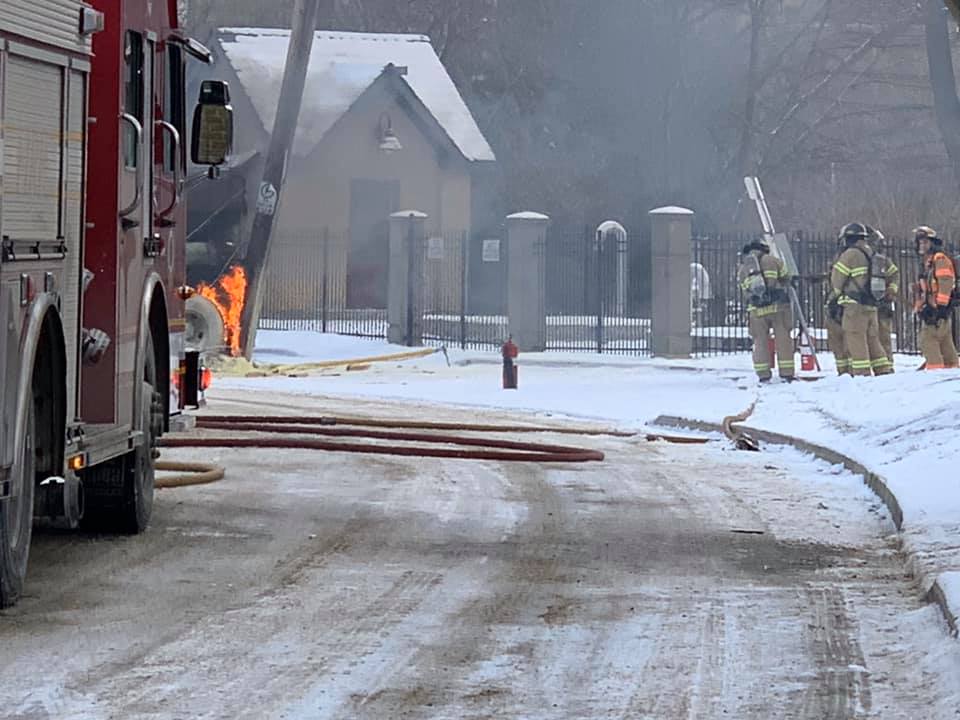
Check Out These Amazing Upcoming Courses!
Canada Class – Arc Flash Studies / IEEE 1584 - FIRST TIME IN CANADA!
How to Perform an Arc Flash Calculation Study
2018 IEEE 1584
By Jim Phillips, P.E.
With special guests: Len Cicero and Jim Pollard
Vancouver, British Columbia – February 24 – 25, 2020
For the first time ever, Jim Phillips is bringing his Arc Flash Studies class based on the 2018 IEEE 1584 to Canada! This very intense 2 day course includes an in depth discussion of:
Five different electrode
configurations to enable more detailed modeling
More choices for enclosure types and sizes
Enclosure correction factor calculation to adjust for specific enclosure size
The effect of grounding has been eliminated
An arcing current variation factor calculation replaces the 85% factor
Calculations performed at 1 of 3 voltage levels with interpolation to actual
voltage
The 125 kVA transformer exception was eliminated
Each calculation is now performed in 2 steps which includes an initial calculation based on one of three voltage levels and a second calculation interpolating to the specific system voltage. The 125 kVA “exception” was replaced. Learn why and what has replaced it. What about the 2 second rule?
Loaded with Hands-On Calculation Problems
This class will be packed with many hands-on calculation examples using Jim’s worksheets. The calculations will illustrate the various changes with the new edition and provide comparisons between the results using the 2002 Edition of IEEE 1584 and the 2018 Edition.
Hands-On Calculation Examples include:
• Arcing
Short Circuit Current – Intermediate and Final
• Necessary
Extrapolation and Interpolation
• Enclosure
Size Correction Factor
• Incident
Energy – Intermediate and Final
• Arc
Flash Boundary – Intermediate and Final
• Low
Voltage and Medium Voltage Calculations
• DC
Arc Flash Calculations
Jim will be joined by special guests Len Cicero and Jim Pollard who will be discussing CSA Z462 requirements for arc flash studies and how the study results are used to select appropriate arc rated clothing and PPE.
Questions?: Contact Program Director, Brenda: 480.275.7451 or brenda@brainfiller.com
Don't Miss The Arc Flash Summit In Pittsburgh June 25, 2020!
Eaton’s
Power Systems Experience Centerwill host an Arc Flash Summit at our Power
Systems Experience Center (PSEC) in Pittsburgh, PA this June where you can see
some of the latest arc flash solutions to keep your people safe. Industry experts will provide PDH certified
training in more than 10 technical sessions.
Case studies and live demonstrations will be scheduled throughout the
day. The PSEC is the perfect venue for this event because you will not only
learn about the solutions but you can see them in action. Mark your calendars and look for more
information about registering for this event soon. If you are interested in learning more about
the PSEC, please visit our website at www.eaton.com/experience
and look for some of our videos on arc flash safety under the videos link. We hope to see you there!
Learn More About Electrical Incident Response Reporting Investigation and Management In This Video Below!
Hand Cranked Generator To Produce Power
Do you know the typical capacitor size and rating? Check out this video on Instagram and learn more about using aHand Cranked Generator to Produce Power: here.

How Do You Honour Someone Like Neil Peart?

Editorial: Reflect on the real Neil Peart when creating a memorial -St. Catharines Standard
How do you honour someone like Neil Peart?
The answer is complicated, because the Rush drummer was a complicated person.
He was a rock star who was introverted. A prolific author who would rather go unrecognized when he was out and about.
With Rush, he performed nightly before thousands of people, yet left the meet-and-greets with fans to bandmates Alex Lifeson and Geddy Lee.
He shied away from signing autographs because he didn't agree with the concept of celebrity. He believed in humility and remained humble.
Peart, who died from cancer last week at age 67, grew up in Port Dalhousie and is known the world over as the drummer for the iconic Canadian rock band Rush.
Modern Drummer magazine ranked him No. 3 all-time among drummers, behind only jazz percussionist Buddy Rich (Peart's idol) and John Bonham of Led Zeppelin. Rolling Stone magazine put him at No. 4.
Port Dalhousie was home for the first two decades of his life. It's where he learned to play the drums, joined local bands and went to high school.
The announcement of his death shocked us. His illness was kept from everyone but his family and closest friends, who respected his wish for privacy.
For a lot of people, Rush provided the soundtrack to their lives from the mid-1970s through to its final concert in 2015.
They were just always there, touring constantly and putting out new music that changed with the times as they themselves grew as musicians and writers.
For Rush fans, Peart's death might have hit hard the same way others felt when John Lennon or Elvis Presley died. That's the kind of bond Rush has with its fans.
By early Tuesday, nearly 11,000 people had signed an online petition calling on the City of St. Catharines to honour Peart, possibly with a plaque or statue at Lakeside Park where he once had a summer job working a carnival booth. A park he immortalized in song.
But when we memorialize Peart, we need to take into account not just the drummer and author we knew, but also the man he was.
In the song "Limelight," he wrote: "Living in a fish-eye lens, caught in the camera eye. I have no heart to lie. I can't pretend a stranger is a long-awaited friend."
And he meant it.
It's not that he didn't like his fans; he was friendly and courteous when they approached him respectfully. But he never considered himself any more special than any of them.
People's grief is sincere because Peart, and Rush, never disappointed us. They were rock stars without the rock-star attitude. You knew them as guys you'd like to hang out with.
So let's honour Peart, for who he was.
One way is to read his books — most start from the premise of his travels, but are more about his personal feelings on life, stardom, his personal losses and his love for music. He was an observer.
By all means, we should memorialize him. He was special. And while he didn't seem like a statue kind of guy, there are many other ways to do it. And his family should be involved.
In an essay he wrote for The St. Catharines Standard in the mid-1990s, Peart wrote, "maybe the role models that we really need are to be found all around us, right in our own neighbourhoods."
"Not some remote model of perfection which exists only as a fantasy, but everyday people who actually show us, by example, a way to behave that we can see is good, and sometimes even people who can show us what it is to be excellent."
Unintentionally, Neil Peart was describing himself. He will be missed.
Electrical Safety Assistance? There’s A FREE App For That!
Don’t forget, our NEW Arc Flash Electrical Worker Quick Field Guide APP is available on Google Play for FREE! Download it Here
We hope you enjoyed all of the information in our Winter Newsletter and look forward to hearing from you, as well as bringing more up-to-date electrical safety information and tips in our Spring Newsletter! As always, you are invited to contribute a story or a question that you would like to bring forward to other readers, related to workplace electrical safety or lockout, including PPE and safety equipment.
Please send your stories and questions to Len at len@arcflash.ca . You can also continue the conversation with us on our Linkden Workplace Electrical Safety Communications group!



